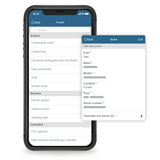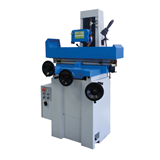Directional drill guide for Aussie buyers. Get pricing, rig types, site matching tips, and VoC training insights, all in one trusted, 2025-ready resource.
Key takeaways:
- Directional drill prices in Australia range from $90,000 to $750,000+, depending on power, thrust/pullback force, drilling depth, and automation features
- Most common machine types include mini HDD rigs (<20,000 lbs), mid-size rigs (20,000–60,000 lbs), and maxi rigs (60,000+ lbs) used for larger-scale civil and infrastructure projects.
- Ongoing operating costs typically reach $50–$120/hour, factoring in fuel, wear parts, labour, and fluid consumption.
- Routine maintenance including fluid systems, drill rods, and powertrain servicing can extend lifespan by 30–50%, significantly improving ROI.
- Financing options such as chattel mortgages or low-doc leases can reduce upfront cost barriers and offer tax advantages.
- Compliance with AS/NZS standards and state-based utility location protocols (like DBYD) is crucial for legal, environmental, and safety obligations.
- Choose the right rig for your terrain to avoid breakdowns and costly rework, use geotech reports to guide your decision.
- Certified operators protect your investment by improving safety, maintaining warranties, and meeting insurance and compliance requirements.
Introduction: Why directional drills matter in modern construction
Horizontal directional drilling (HDD) has become a key trenchless technology in Australia's construction, mining, and utilities sectors. It allows pipelines, cables, and conduits to be installed underground with minimal surface disruption, making it essential for urban and environmentally sensitive areas.
With demand for directional drilling increasing across Australia’s NBN rollout, renewable infrastructure, and civil engineering works, choosing the right machine can significantly affect your project efficiency, ROI, and regulatory compliance.
This guide covers everything Australian buyers need to know about choosing, operating, financing, and maintaining directional drilling equipment.
Types of directional drills: Choosing the right rig for your work
Understanding your job scope is critical in selecting a directional drill that matches your depth, diameter, and ground conditions.
1. Mini HDD rigs (<20,000 lbs thrust/pullback)
- Suitable for short, shallow bores under roads, driveways, and small utilities
- Compact and easily towable
- Common in suburban telecoms and water projects
2. Mid-size HDD rigs (20,000–60,000 lbs)
- Ideal for municipal water, gas, sewer, and fibre installations
- Handles more abrasive soil and moderate depths
3. Maxi rigs (60,000+ lbs)
- Used in major pipeline, rail, and infrastructure projects
- Handles long bores, large diameters, and rocky terrain
What do directional drills cost in Australia?
Prices vary significantly depending on thrust force, torque, depth capacity, and technology stack (e.g. GPS, telematics, automation).
Typical pricing ranges:
- Mini HDD rigs: $90,000 to $200,000
- Mid-size rigs: $200,000 to $400,000
- Maxi rigs: $400,000 to $750,000+
Factors influencing price:
- Drilling depth and diameter capacity
- Engine power and torque
- Included locating and steering systems
- Year, brand, and dealer support
- Trailer and fluid mix system inclusion
Operating and maintenance costs
While upfront cost matters, total cost of ownership is determined by fuel, labour, wear parts, fluids, and preventive maintenance.
Typical running costs:
- Fuel: $20–50/hour (diesel usage varies by rig size)
- Drilling fluids: $5–20/hour depending on ground conditions
- Wear parts: Drill rods, housings, bits, and mud motors
- Labour: 2–4 operators per drill, ~$45–85/hour per operator
Maintenance schedule essentials:
- Daily: Greasing, fluid checks, safety checks
- Weekly: Drill rod inspections, belt tension, pressure testing
- Monthly: Engine diagnostics, fluid flushes, steering and tracking calibration
- Annually: Powertrain rebuilds, full service records for warranty compliance
Regular maintenance can reduce breakdown frequency by 30–50% and extend drill life by 3–5 years.
Spare parts and consumables
Always confirm OEM or aftermarket parts availability in Australia. Look for:
- Drill rods and housings (available in 1.5m to 4.5m lengths)
- Bits and reamers for various soil types (rock, clay, loam)
- Mud motors, swivels, bearings
- Rubber tracks, hydraulic lines, seals
- Filters, fluids, and greases
Reliable access to parts reduces costly downtime and helps retain resale value.
Financing options for directional drills in Australia
Due to high capital costs, most buyers finance via specialist lenders. Options include:
1. Chattel mortgage
- Ownership from day one
- GST reclaimable upfront
- Depreciation benefits
2. Equipment lease
- Lower upfront cost
- Tax-deductible repayments
- Option to buy or upgrade later
3. Low-doc equipment finance
- Ideal for SMEs or sole traders
- Often available up to $500,000
- Fast approvals with limited paperwork
Consult lenders familiar with construction equipment finance for better terms and bundled insurance.
Warranty and resale value tips
Warranty types:
- Standard manufacturer warranty: 1–3 years / 1,000–3,000 hours
- Extended warranties: May cover powertrain, electronics, hydraulics
- Service contracts: Can include maintenance + remote diagnostics
Boosting resale value:
- Maintain full service history
- Use genuine parts and fluids
- Store equipment undercover
- Resell before major overhaul (typically at ~8,000–10,000 hours)
Compliance and certification in Australia
Key requirements:
- AS/NZS 4871: Electrical equipment for mining and drilling
- MDG15: NSW-specific guideline for drill rig safety
- DBYD (Dial Before You Dig): Mandatory for subsurface works
- Environmental management plans (EMPs): Required on many commercial projects
Ensure your equipment and operators meet:
- RTO-certified training (e.g. RIICCM304D)
- Site-specific safety inductions
- Utility authority permits for urban HDD work
Failure to comply may lead to fines, project delays, or legal liability.
Soil and site assessment: Matching rig to terrain
Choosing the right directional drill isn’t just about size or power, it’s about compatibility with your ground conditions. A mismatch can lead to inefficient bores, increased wear, and costly breakdowns.
Key soil considerations:
- Clay-rich soils: Require torque-heavy rigs with effective mud systems to prevent clogging.
- Rocky terrain: Needs high-thrust, high-torque drills with rock-capable heads and reamers.
- Sandy or loose soils: Best managed with fluid-assisted drilling and stabilisers to prevent collapse.
- Mixed ground conditions: Consider rigs with versatile tooling systems and adaptive control technologies.
Site-specific factors:
- Depth and bore length: Deeper or longer bores demand larger rigs with greater pullback force.
- Access constraints: Urban, tight-access, or sloped areas may require compact or walk-over units.
- Environmental sensitivity: Use low-impact rigs near protected areas or waterways to meet council or EPA guidelines.
Practical tips:
- Get a geotechnical report before tendering large-scale HDD jobs.
- Match rig specs not only to current site conditions but to your most common future jobs.
- Speak with drill suppliers about terrain-optimised tooling bundles, some offer region-specific packages for Australian soil types.
Training and operator certification requirements in Australia
Hiring or training a competent operator isn’t just smart, it’s essential for safety, productivity, and legal compliance. In Australia, directional drill operators must meet specific training and certification standards.
Minimum requirements:
- RIIUHB304E – Conduct Horizontal Directional Drilling: This nationally recognised unit is the baseline for most operators in civil and utility contexts.
- White Card (CPCWHS1001): Required to work on any construction site.
- High-risk work licence: May be needed for specific attachments or trenchless techniques depending on state/territory regulations.
Recommended upskilling:
- Locating system training: For precise bore path control and safe avoidance of underground assets.
- Fluid management and mud mixing courses: To ensure optimal drilling performance and avoid environmental breaches.
- OEM training programs: Often included with machine purchase or available through accredited RTOs.
Cost of training:
- Nationally accredited HDD courses range from $1,200 to $3,000 per operator, depending on location and course depth.
- Onboarding a trained operator saves on tooling wear and boosts bore accuracy, reducing rework risk.
Common questions from directional drill buyers
Q1: How do I choose the right drill size?
Match thrust/pullback force and torque to the job’s bore length, diameter, and ground condition. Consult the project engineer and local geotechnical data.
Q2: Can I buy a used directional drill safely?
Yes, if the machine has:
- Full service records
- Verifiable hours
- Minimal structural wear
- A dealer or OEM inspection report
Q3: Do I need training to operate an HDD rig?
Yes. Operators must be trained in:
- HDD safety and navigation
- Locating systems
- Fluid management
- Emergency response
Training through a Registered Training Organisation (RTO) is highly recommended.
Q4: How long does a typical HDD rig last?
With proper servicing, most HDD rigs last 8,000–12,000 hours. Maxi rigs used intermittently may last longer.
Q5: Can I finance both the drill and fluid/mix trailer?
Yes. Most lenders bundle full rig packages including mixing systems, trailers, and even service agreements.
Final thoughts: plan for long-term productivity
Directional drills are a major investment, but with the right equipment, financing, and maintenance strategy, they can deliver exceptional ROI over 10+ years. Ensure your rig matches your core project needs, stay compliant, and invest in training and servicing for best results.
When in doubt, consult local suppliers, financiers, and HDD specialists who understand Australia’s regulatory environment and market demands.

.png)

-160x160-state_article-rel-cat.png)









